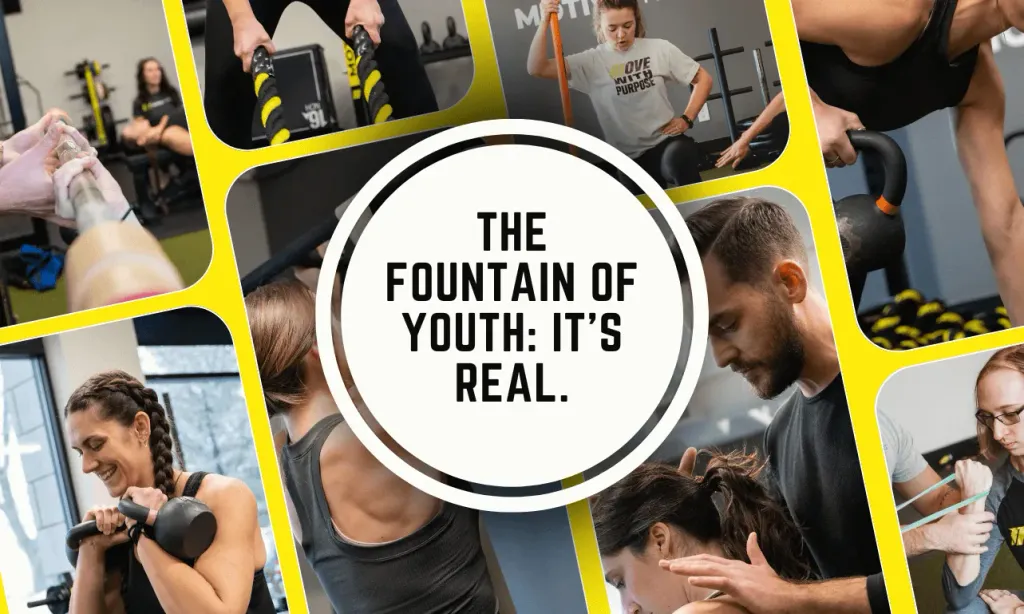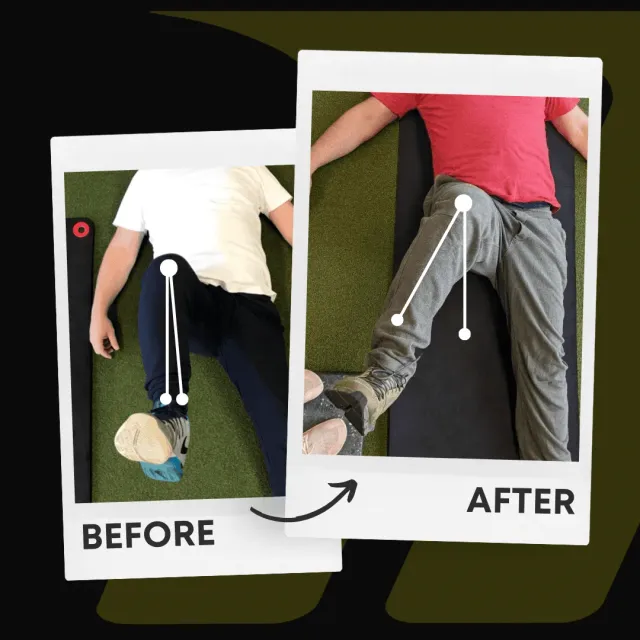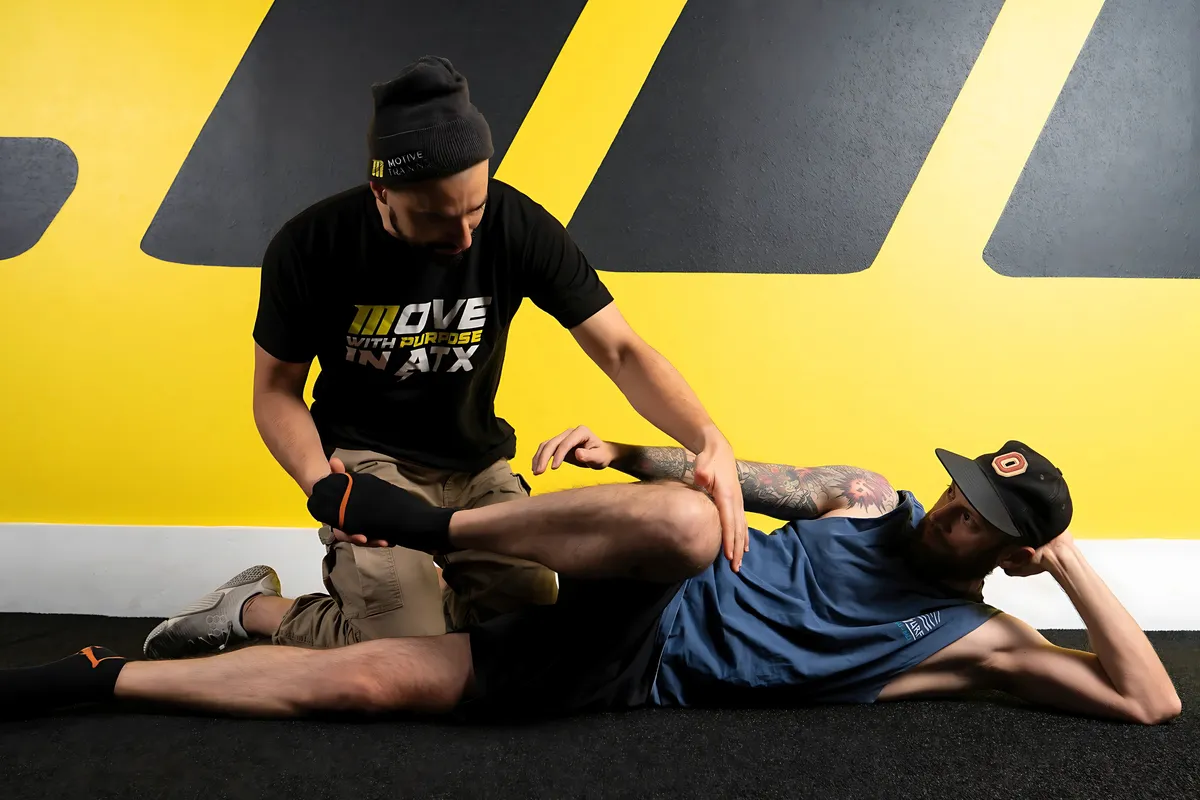The Fountain Of Youth: It's Real
January 2, 2023 | Strength

Have you ever heard of the fountain of youth? It’s a mythical spring that will restore and revitalize anyone who drinks or bathes in its waters. It sounds too good to be true, but we know exactly where the spring is.
First, I want you to imagine a scenario where you come upon this fabled spring. You approach it, drink from it, and then…? Take a moment and close your eyes.
How do you feel physically? Are you free from aches and pains? Is your body moving optimally? Are you strong, fit, and mobile?
How do you feel emotionally and mentally? Are you cleansed from the stress and worries of living and aging?
No matter what stage you’re at in life, it’s safe to say that feeling youthful, energized, and happy is the goal. And our clients would agree. We frequently hear them say things like,
“I want to have more energy.”
“I look forward to doing physical activities again that I used to enjoy.”
“Something just doesn’t feel right; I don’t believe this is how I should feel at this age.”
“I want to engage with my family, play with my kids, and experience life to the fullest.”
How about you? Have any of these thoughts or concerns crossed your mind? I’m sure they have. So, if you’re wondering where the spring is, read on.
Movement Is The Key To Life
Aging is a part of life, and how you age is unique. Some of us will have gray hair earlier than others, and some will wake up before dawn because of uncontrollable shifts in circadian rhythms. It’s just the way the world works.
However, a recent study from the University of Michigan found a unique determinant of aging that has gone mostly unnoticed: grip strength. (1) According to their research, “the weaker your grip strength, the older your biological age.” This was measured by looking at the participants’ DNA methylation (DNAm). Simply put, the weaker the grip strength, the greater likelihood of age acceleration, which was measured at the cellular level.
Editor’s Note: Keep in mind that this research is correlative. We’re not suggesting that having a weak grip means you’re old. Rather, having a weak grip is associated with age acceleration.
The study goes on to suggest that muscular strength is a predictor of longevity. In other words, if you exercise and maintain your lean mass (i.e., muscle, connective tissue, bone density), you will stave off age-related conditions and diseases.
Thus, the goal is to move and do it often. And that’s the answer you’ve been looking for all along; that’s the fountain of youth.
Putting Thoughts Into Action
Here are some ways to maintain and strengthen your muscles at any age.
1) STRENGTH TRAIN AS OFTEN AS YOU CAN
The Centers for Disease Control (CDC) recommends a minimum of two days of muscle-strengthening activities per week. (2) However, we suggest you go above and beyond that recommendation. Most people will need to disperse their training load over multiple days to reap the greatest benefits from exercise. Thus, we recommend you train three to four times per week for at least 30 minutes at a time. Furthermore, you should strive to achieve a moderate to high intensity for all those workouts–assuming recovery is reached.
The CDC also recommends hitting your major muscle groups (e.g., arms, chest, core, hips, etc.). And that we can get behind. In fact, if you’re strapped for time, hitting multiple body parts simultaneously will provide much better results. Workouts don’t have to be fancy to be effective, and you don’t even need equipment to strength train. But if you can, work with a professional; learn the proper mechanics of movements to reap the full benefits.
For instance, at Motive Training, we teach people to move with purpose. Once you understand that you need to move, we’ll show you how to move. So, if you’re unsure where to start, reach out.
Ultimately, if you’re strength training at all, you’re moving in the right direction.
2) GAIN AND MAINTAIN YOUR MOBILITY
Being mobile means you can move pain-free and fluidly. Taking things one step further, being mobile means you fundamentally understand how your body is capable of moving. Sure, it’s great that you can squat, but do you know how well your toes, ankles, knees, and hips move in all available ranges of motion?
Don’t stop learning what your body is capable of doing. Check out our article on controlled articular rotations (CARs) to better understand what we’re talking about here.
Ultimately, having functional movement capabilities will mitigate injuries and the deleterious effects of aging.
3) CONSISTENCY IS KEY
Motivation is essential to behavior change (e.g., starting an exercise program), but it can be fickle. Relying solely upon daily motivation to get yourself moving is a classic misstep. Instead, pick the lowest-hanging fruit every day to keep yourself going. Small steps over and over and over will be the foundation of your fountain.
Ask yourself what you need to do that will support a consistent and regular commitment to healthfully strength training your body. Maybe it’s as simple as putting it on your calendar. Perhaps you need to join a class. Maybe you commit to working one-on-one with a professional. Whatever will help you be consistent, take that first step.
Once you have momentum, you can prioritize programming, exercise execution, intensity, etc. Just remember, if you don’t show up, to begin with, the rest is irrelevant.
4) EAT PLENTY OF PROTEIN
Your body needs protein to maintain muscle mass, especially as you age. To help support muscle growth and maintenance into your wiser years, you want to strive for .8 grams of protein per pound of body weight per day. If you exercise regularly, you can consume a bit more (1 gram of protein per pound of body weight per day.) However, the culmination of research suggests that .8 grams of protein is a good goal for most people. (3)
So, for example, a 165-pound individual should consume between 132-165 grams of protein per day.
Take stock of your day; what does your body need? What does your average daily intake of protein look like? Just don’t shy away from eating protein. If you include 25-35 grams of protein in each meal, you’ll be well on your way to hitting your daily protein goals in no time.
5) REST AND RECOVER
Your body, muscles, and mind require rest. The National Institutes of Health reports that good sleep quality correlates to greater muscle strength, and research supports that. (4) Similarly, short bouts of sleep may be a risk factor for decreased muscle strength. So, ensure you get quality, restful sleep for at least 7 hours per night. Some of you may need more, but 7 hours seems to be the minimum effective amount of time.
Editor’s Note: We are not sleep experts by any means, and sleep hygiene is highly individualized. Andrew Huberman is more privy to sleep hygiene than we are, so definitely check out his article here if you’re looking for a place to start.
Recovery should not be neglected, either. Consider that strength training taps into your sympathetic nervous system (i.e., your “fight or flight” system); it’s engaging, heart-pumping work. Recovery, then, should focus on your parasympathetic nervous system (i.e., your “rest and relax” system). Take walks, meditate, or learn to breathe. Do things that slow you down and give your body time to recuperate.
Just remember, you need a stimulus to recover from, to begin with. If you’re not training at all, you don’t need a reason to recover, right?
Don’t Fall For Gimmicks
The health and beauty industries have had our number for a long time. They market to our insecurities and greatest wishes. We’ve become their pawns in a sense.
“Buy this; it will give you the energy, body, and happiness you seek.”
We’ve been convinced that we need the latest ointment, gadget, or fad diet to access the overflowing fountain of youth. The less polished, less glittery fact is that the fountain is in how you nourish your muscle strength, joint health, and mobility. Minimize your risk factors for aging by starting with the tips above.
Based on personal experiences and those shared by my clients, I am confident that if you work to keep your body functional and mobile, supported with ongoing strength training, you will reap the benefits of sipping from that fabled fountain of youth.
You will have more energy. Your ability to truly enjoy the activities you like, such as skiing, hiking, paddling, or golf, will grow. And when you experience less downtime due to injury or the stress injury can induce, you will have more time to do the things you love. Fewer aches and pains slowing you down or keeping you on the sidelines means you can live a more fruitful life. In addition, your experiences with friends and family will be enriched.
Take a sip or a gulp. Revitalize yourself. Start today by focusing on your strength and muscle health; you will soon bathe in the fountain of youth.
Editor’s Note: The above is not a prescription or personal medical advice. Please consult your medical doctor, nutritionist, or dietician were necessary for medical guidance.
REFERENCES
- Grip strength is inversely associated with DNA methylation age acceleration
- How much physical activity do adults need?
- The myth of 1 g/lb: Optimal protein intake for bodybuilders
- Relationship between sleep and muscle strength among Chinese university students: a cross-sectional study
Written by

Motive Training Staff
We’ll teach you how to move with purpose so you can lead a healthy, strong, and pain-free life. Our headquarters are in Austin, TX, but you can work with us online by signing up for KINSTRETCH Online or digging deep into one of our Motive Mobility Blueprints.

